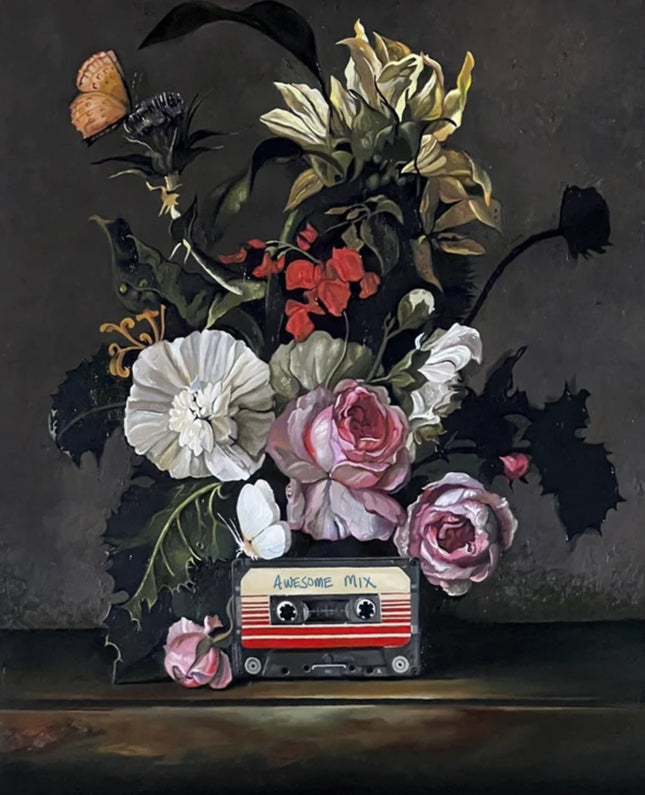
Flowers & Plants

Dave Pollot Mixtape Archival Print by Dave Pollot
Mixtape Limited Edition Archival Pigment Fine Art Prints on Matte Velvet Rag Paper by Graffiti Street Art Pop Artist Dave Pollot. 2022 Signed & Numbered Limited Edition of 100 Artwork Size 19.82x24 Edition of 100 -Signed and numbered in pencil beneath in image -including 2" white margins -Printed on matte velvet rag paper Exploring Dave Pollot's Mixtape Archival Print Dave Pollot is an American artist known for innovatively integrating street art elements into classical and pop art themes. His work often involves reimagining thrift store paintings by introducing modern elements into the otherwise classical compositions, creating a whimsical and thought-provoking juxtaposition. In his limited edition piece titled "Mixtape," Pollot combines the aesthetic of street pop art with the delicate sensibilities of traditional still life, creating a visually striking artwork that resonates with a broad audience. This artwork, signed and numbered by Pollot himself, is part of a limited edition of 100 pieces, each printed on matte velvet rag paper, emphasizing its exclusivity and appeal to collectors. Characteristics and Medium "Mixtape" features a lush arrangement of flowers, a classical subject in art, contrasted sharply by including a modern cassette labeled "Awesome Mix." This blend of the old and the new is characteristic of Pollot's style, where he seamlessly merges elements from different eras to comment on the transient nature of art and cultural artifacts. The artwork is rendered on matte velvet rag paper, a choice that enhances the colors and gives the piece a soft, tactile quality that complements its visual depth. Matte paper also avoids the glare that glossy prints might exhibit, allowing for a more intimate and engaging viewing experience. The Significance of Street Pop Art and Graffiti Artwork in Modern Culture Street pop art and graffiti have evolved from their rebellious, underground origins to become recognized and celebrated contemporary art forms. Artists like Dave Pollot, who engage with these styles, often do so to make statements about society or to bring a new perspective to traditional art forms. In "Mixtape," the cassette tape – an object that symbolizes the recent past and evokes nostalgia – serves as a reminder of the rapid pace of technological and cultural change. Including this element in a traditional still life disrupts the expected visual narrative and invites the viewer to reflect on the evolution of music media and its impact on personal and collective memory. Like much of Pollot's work, this artwork appeals to a diverse audience. It reaches those who appreciate the technical skill required in traditional art forms and those who enjoy street art's edgy, contemporary feel. Additionally, the limited nature of the print run – only 100 pieces – along with the artist's signature, adds a layer of collectibility and value, making it a prized possession for both art lovers and investors. In the broader context, Pollot's "Mixtape" exemplifies how modern artists are blurring the lines between high art and popular culture. By bringing elements of street pop art into the gallery, these artists are challenging preconceived notions about what constitutes "fine art" and who art is for. This art democratization reflects a more significant cultural shift towards inclusivity and the recognition of diverse artistic expressions. Pollot's work celebrates this shift, showcasing how traditional and modern visual elements can coexist harmoniously and create new meanings. Dave Pollot's "Mixtape" is more than just a visually appealing piece; it is a thoughtful commentary on the intersection of past and present, popular culture's temporary nature, and art's evolving boundaries. Through this work, Pollot captures the essence of street pop art and graffiti artwork and elevates it, offering a sophisticated yet accessible piece that resonates with a contemporary audience.
$572.00$486.00


